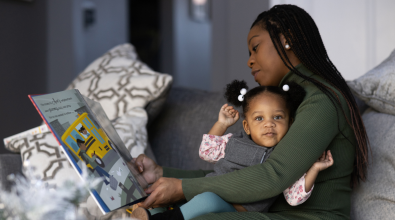How residents can help cities stand up to extreme weather

When Charleston, S.C., started building an app to help residents navigate the city’s increasingly frequent street flooding, there was one feature city leaders were sure users would want: Live video feeds. The city already has video cameras to monitor traffic and public safety, the thinking went. Why not flooding?
But before city leaders purchased expensive camera equipment, they decided to test the idea with dozens of residents. And they’re very happy they did. Because when people looked at paper prototypes of the app and started imagining how they might use it, hardly any of them said they wanted to see live video. Instead, they wanted to see a map showing where streets were flooded and directions to get around them.
Building that feature into the app would require a system of sensors, not cameras. It also would be a good bit more affordable, much to the delight of Charleston Chief Resilience Officer Mark Wilbert.
“Don’t ever do anything like this unless you’re going to spend the time engaging the community, find out what’s important to them, and then build it with them,” Wilbert said. “At times you think you know what the people want. But there’s great value in really interacting with them, listening to them, and responding to them.”
Charleston is one of several Champion Cities in this year’s Bloomberg Philanthropies Mayors Challenge that worked on solutions related to extreme weather in an era of climate change. Others included Miami and Miami Beach, which like Charleston, aim to keep residents abreast of flood risks related to sea-level rise; Lafayette, La., which hopes to get citizens building rain gardens to lessen the impact of stronger storms; and Phoenix, which is developing plans to protect its most vulnerable residents from blazing temperatures that keep setting new records. All received $100,000 to test innovative new ideas, learn what works, and adapt their plans for a shot at winning up to $5 million later this month.
In six months of testing their ideas, this group not only proved once again that cities are on the front lines of thinking about how to defend humanity from the impacts of climate change. They also demonstrated — as Charleston found — that the smartest, most cost-effective way to develop weather solutions is to co-create them with the people and businesses they’re meant to protect.
In Charleston, that meant engaging residents, commuters, and employers in a series of hands-on discussions about their information needs during a flood. Charleston is a low-lying coastal city where just a high tide can fill streets with water, make roads impassable, and cause traffic tie-ups. The city saw a record 50 days of flooding last year; by 2040, Charleston expects to see flooding 180 days a year.
To begin building their flood navigation app, the Charleston team convened several dozen potential users. They were asked to take different bits of information the app could theoretically provide — such as rainfall predictions or time of high tide — and rank each as important, maybe important, or not important. Results of this “card sort” exercise later fed into the design of a paper prototype of the app — and later still, a crude but clickable prototype of an actual smartphone app.
[Get the latest innovation news from Bloomberg Cities! Subscribe to SPARK.]
At each step, the Charleston team incorporated resident feedback, like what they heard about video cameras, and made improvements based on what people said they want. This process of rapid, iterative evolution not only made the app better, Wilbert said, but also began to build enthusiasm for it. For example, medical centers began to see the app as something that could help doctors stay on schedule as they moved between health facilities.
“As people got to see the prototypes, they got a lot more interested in the fact that this was going to be able to help them save time and money,” Wilbert said. “All of a sudden, we saw people believe in what we were doing.”
Phoenix also found it pays to ask residents what matters to them. Through the Mayors Challenge, the city worked on developing “HeatReady Phoenix” — a comprehensive plan for responding to the dangers of extreme heat. And in Phoenix, those dangers are great. Last year, temperatures topped 110 degrees 25 times, and more people than ever — 155 in the Phoenix area — died of heat-related illnesses.
Phoenix is breaking the problem and potential interventions into four areas: housing, infrastructure, education, and emergency preparedness. Going into the testing phase of the Mayors Challenge, the Phoenix team assumed they would need to build a mobile app to stay in touch with residents about heat dangers.
But when the city tested that that idea with residents, the app was a “no go,” according to Chief Service Officer Michael Hammett. Some elderly residents, among the most vulnerable to extreme heat, didn’t have smartphones. Others worried that an app might deplete their data allotments. Residents wanted to be in touch with the city about heat dangers but preferred simpler methods such as text messages.
“It was counterintuitive to what we were thinking,” Hammett said. “Our thought at city hall was, ‘Let’s do the most comprehensive thing, an app they can interact with.’ And they said, ‘No, we just want to get the information easily’.”
[Read: Unleashing the power of public prototyping]
That’s a similar message to what Miami Beach heard while testing its Mayors Challenge idea. Like Charleston, Miami Beach faces a growing flood risk thanks to sea-level rise. The city wants to combine the latest flood modeling techniques with communications tools so residents and city employees know when flooding is likely and how to respond to it.
One lesson Miami Beach learned right away was that different audiences have different needs. “City employees want very accurate and detailed information so that they know when to maybe close a road, or put out water pumps, or reroute a trolley from a stop that may get flooded,” said Deputy Chief Resilience Officer Amy Knowles. “While residents really just wanted to know what do I do about it, and when is the ‘all clear’ going to be issued?”
Like Charleston, Miami Beach prototyped multiple versions of a smartphone app with residents. But as in Phoenix, the feedback indicated that a standalone app wasn’t what people wanted. They saw value in real-time flooding updates, but they thought it would be more practical if that were integrated into apps they were already using, such as Waze or Google Maps. Miami Beach rolled that learning into its final Mayors Challenge application, which is a joint effort with the city of Miami.
“We should do more prototyping in government,” Knowles said. “It’s a fabulous idea to test without investing all the time, energy, and resources into a program, to identify your blind spots and think it through before launching a full program.”


